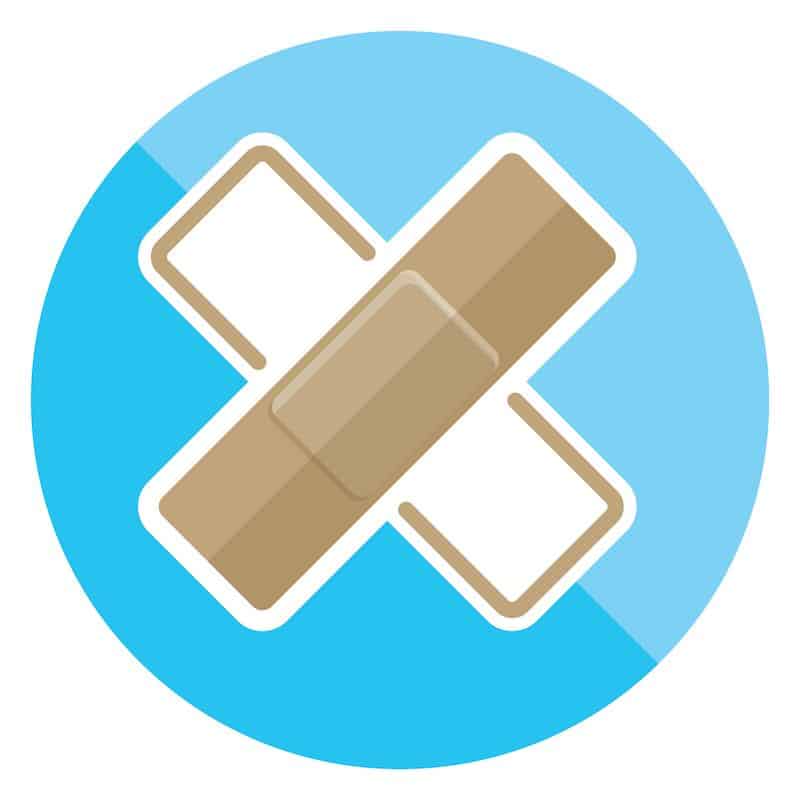
Small, low technology items, such as medical tapes, are often left out of the full evaluation process because they are frequently perceived as a commodity product with little to offer in terms of impact on important factors to the facility, such as enabling high-quality care and patient satisfaction. However, the perception that “a tape is just a tape” and that it has little impact on quality care is untrue – and it could be having more of an impact on the facility than meets the eye.
Tapes market fueled by patient safety innovation
Medical tape is an expanding product category that’s used on virtually everyone who comes through a healthcare facility’s door. According to Persistence Market Research’s recent examination, by 2024 the industry will have a compound annual growth rate of 5.8 percent. Some major factors contributing to this expected growth are:
- an increase in hospital-acquired infections (HAIs) spurring a shift to using single patient use tape rolls under recommendation by the CDC to avoid cross contamination
- innovation making medical adhesives gentler and more functional within a variety of skin environments
- a growing clinical awareness of various tape characteristics developed for different securement purposes (i.e. critical tube securement, dressing securement, fragile skin, contoured body parts, etc.)
- rising awareness of medical adhesive-related skin injuries, or MARSI – a potentially serious injury occurring when medical adhesives are used improperly – and prevention methods
- more clinicians concerned about their role in ensuring patient safety, among others.
So, how do all of these factors impact a facility’s bottom line?
For decades, 3M has been at the forefront of adhesive innovation, driving medical tape advances through a commitment to enhance patient safety, yet many tape purchasing decisions aren’t reflecting that same priority. Today, many medical tape decisions are largely based simply on the line item cost, making the lowest cost tapes seem like the best option. In reality, medical tapes are more high-tech than many people may think. Different types of adhesives and backing materials are designed for a variety of clinical uses based on its intended job function and skin environments. Using the wrong tape, or applying and removing it incorrectly, can unknowingly cause further issues for both patients and the facility.
For instance, when a tape with too strong of adhesive is used on a patient with fragile skin, the likelihood for MARSI to occur increases once it’s removed. This could potentially cause undue pain while compromising the patient’s skin and increasing the risk of infection. If MARSI occurs as a result of improper tape selection, the facility may now be financially responsible to treat an infection acquired during the patient’s stay and dealing with possible reputation ramifications from an unsatisfied patient.
Important tape trends
Using tape incorrectly is a problem that may aggregate costs down the road and potentially decrease overall patient satisfaction. This is why it’s not only important to think about how current offerings affect patient care, but to be aware of future medical tape developments. Here are a few trends on the horizon to keep an eye on.
- Greater MARSI awareness
Oftentimes the fragility of skin is forgotten and that using too harsh of a tape can compromise its integrity. Although it happens to approximately seven percent of patients, MARSI is commonly misdiagnosed as a tape allergy, when in fact, it’s preventable for most patients. Eradicating MARSI starts with wider spread tape education. Tape education helps purchasers understand the different types of tapes available so the right mix is stocked. It can also help clinicians understand various tape characteristics that will help them better select the most suitable tape for the job. Tape education around what MARSI is and how it can be prevented can reinforce best practices for proper application and removal. As MARSI awareness grows, it’s prevalence and direct care impact will continue to be addressed in clinical research and recognized in more industry standards.
- Increased silicone technology use
Silicone based tapes are becoming increasingly popular as the tape of choice for many clinicians because it is gentle to the skin and is easily repositioned while providing constant adhesion. Rather than adhesive power growing for the duration of wear, like traditional acrylate based adhesives, silicone based adhesion stays at the same level, making removal kinder to the skin and reducing the likelihood of tape-related injuries, or MARSI.
- Simplified tape purchasing
Analyzing medical tape supply rarely ranks high on purchasing’s priority list. It can be hard to determine what the right mix of tape should include, but it doesn’t have to be complicated. Optimizing your tape inventory can help save money, reduce waste and improve patient care. Facilities can start by critically thinking about which tapes are being purchased and why. Utilizing tape experts, like those at 3M, who work with healthcare facilities to audit current tape selection, can help facilities eliminate unnecessary SKUs and introduce tape technologies that meet a wider range of patient needs to more effectively bring the right tape to the right patients for the right application, all without increasing costs.
These forecasted trends can benefit facilities in three major ways: help decrease spending, improve quality of care and enhance patient outcomes. While line item costs are important, take a moment to consider how costs are being defined. Are the potential costs associated with a patient’s critical tube falling out taken into consideration? Or a patient contracting an infection because their skin became compromised after frequent dressing changes with an adhesive that was too strong? These components are oftentimes forgotten when trying to trim spending, even though they rake in a higher total cost.
Medical tapes seem like such a drop in the bucket when it comes to opportunities to cut costs without compromising care, but it’s important to remember that each facility’s clinicians are applying tape to a person – someone in need of top notch medical care – not to a wall and quality should matter.
About the Author
Rafael Jirau is a global business director at 3M. Since joining 3M in 1999, Jirau has held positions in Latin America, and now globally, where he focused on helping facilities find efficiencies through 3M solutions.







